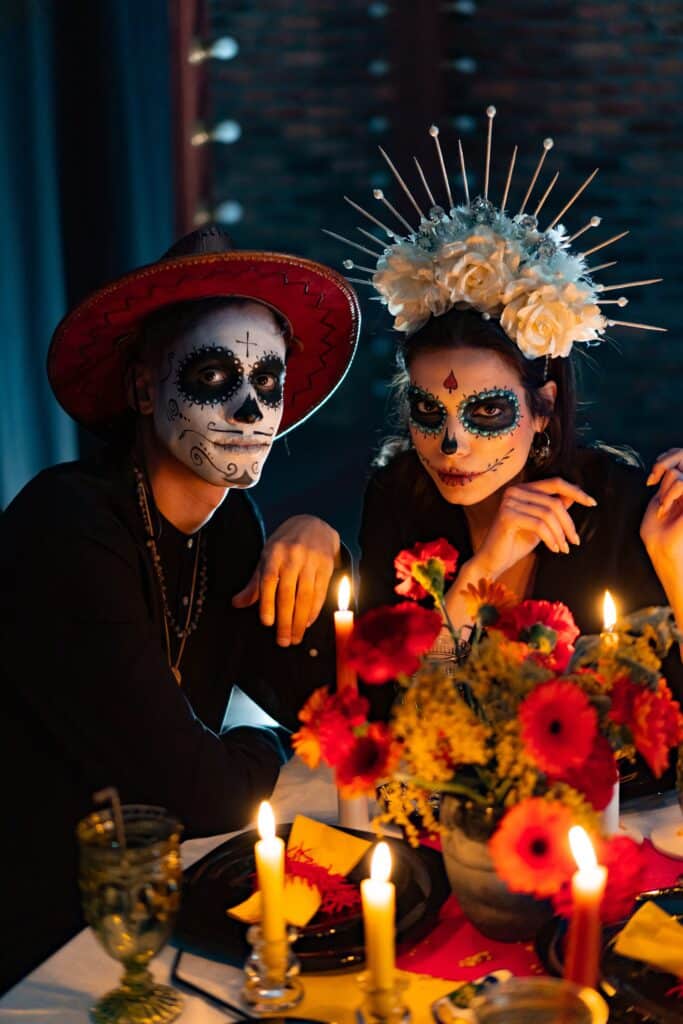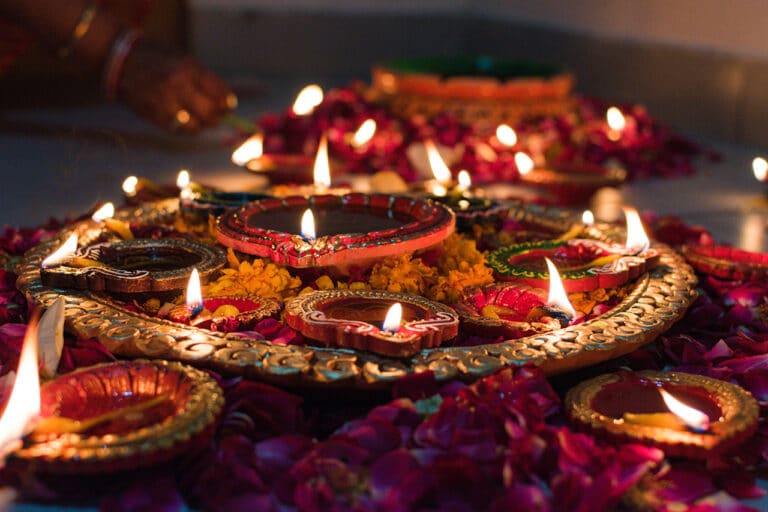How many fall traditions and autumn holidays are there? Do you or your family celebrate Halloween? What about Chuseok, Oktoberfest, or Dia de los Muertos? Fall festivals range from harvest celebrations to spooky affairs to traditional family gatherings. Whether you’re new to one of these traditions and want to know more or miss the celebration in your home country, there’s plenty on this list to satisfy your curiosity.
Check out these nine fall traditions from around the globe. Have you heard of all of these fall holidays? Our team here at Remitly put together this fun guide to explore nine fascinating fall holidays from around the world.
1. Bonfire Night: United Kingdom
On November 5, UK residents celebrate Bonfire Night, also known as Guy Fawkes Day. This day commemorates the failure of the Gunpowder Plot of 1605 when 14 people were plotting to blow up the House of Lords at the State Opening of Parliament.
Their plot was foiled, and ever since, UK residents commemorate the victory. They celebrate by lighting bonfires and with fireworks shows, eating foods like meaty sausages topped with fried onion, ketchup, and mustard. Oftentimes, Brits celebrate on the weekend closest to November 5 to maximize the festivities.
2. Chuseok: Korea
Also known as Hangawi, Chuseok is the Korean version of Thanksgiving. It is a three-day festival that is celebrated starting on the full moon of the eighth month of the lunar calendar. The Korean people celebrate this holiday to thank the heavens for a successful harvest.
To show their gratitude, they gather and enjoy a feast of the fruits of their harvest, hoping for another fruitful year ahead. After the Lunar New Year, Chuseok is the biggest holiday in Korea. Traditional foods include a popular rice cake known as songpyeon, filled with chestnuts, red beans, or sesame. Other traditions include percussion quartets, talchum dance, and ssireum, traditional Korean wrestling.
3. Dia De Los Muertos: Mexico
Often associated with Halloween but with a very different meaning, Dia De Los Muertos is typically celebrated on November 1 and 2 every year. The name translates to “Day of the Dead.” It coincides with the Catholic All Souls’ Day and incorporates indigenous traditions from Mexico.
During this autumn holiday, family and friends gather to pray for their dearly departed loved ones— deceased relatives, friends, and even pets. Preparations for Dia De Los Muertos include making or buying decorations for the graves of lost loved ones.

4. Diwali: India
South Asians celebrate this well-known holiday for five days that fall in either October or November. Diwali is India’s festival of lights, but it also falls on the Hindu New Year, making it a massive celebration.
To observe Diwali, Indians decorate their homes with lamps, candles, and colorful sand. They exchange gifts and wear new clothes to express joy about the new year. Lanterns across the subcontinent symbolize the power of light over darkness. This joyful and peaceful event has also become important worldwide for the Indian diaspora.
5. Festival of the Yams: Ghana
In the Volta Region of Ghana, the Festival of Yams—also known as Asogli Te Za—takes place every last day of September. This festival holds deep religious and economic meaning for the Ghanaian people.
A good yam harvest means a prosperous year. The festival’s religious overtones include thanking the ancestors and gods for a fruitful harvest. The festival is celebrated in slightly different ways all over Ghana and among Ghanaian people around the globe.

6. Halloween: U.S., Canada, Scotland
Halloween has become global, though it’s most widespread in the United States and Canada. Children dress up in costumes and go door-to-door “trick-or-treating.” Families may place carved pumpkins, known as Jack-o’-Lanterns, out front. Children show off their costumes in exchange for some sweet treats.
On Halloween night in Scotland, this practice is known as “guising.” Kids also perform jokes and short performances to earn their candy treats. Halloween dates back about 2,000 years to the ancient Celtic festival of Samhain.
Origins also include Catholic traditions and religious services. Celebrants would light fires and dress up in scary attire to ward off ghosts on All Hallows Eve, the evening before All Souls’ Day on November 1. Pope Gregory III designated this date as the Day of the Dead in the 8th century.
7. Mid-Autumn Festival or Moon Festival: China, Vietnam, Korea, Japan, and Southeast Asia
This festival is a big deal in many parts of Asia. The Moon Festival is celebrated in China, Hong Kong, Japan, Korea, Vietnam, and Singapore, as well as around the world by other countries like the Japanese, Chinese, and Vietnamese communities.
Chinese National Day usually coincides with Moon Festival. Known as both the Moon Festival and the Mid-Autumn Festival, this holiday celebrates the moon at its fullest and brightest, so the dates change for celebrations.
In Chinese culture, the full moon symbolizes reunion. This is a time when families reunite and spend time together, enjoy a reunion dinner, and share mooncakes.
8. Oktoberfest: Germany
People travel far and wide to participate in a genuine German Oktoberfest celebration. Known around the world, this annual festival runs for 16 to 18 days in the southern German city of Munich.
Oktoberfest originally marked the marriage of the Crown Prince of Bavaria (later known as Louis I) to Princess Therese von Sachsen-Hildburghausen. Every year, about 6 million people attend Oktoberfest.
The celebrations include days of singing, dancing, and drinking together, often in traditional German attire. Traditional sausages, pretzels, and craft beers are always on the menu at Oktoberfest—whether in Germany or at similar festivals in communities with German heritage.
9. Thanksgiving: United States and Canada
Thanksgiving is celebrated in both Canada and the USA, with particular emphasis in the U.S. In Canada, Thanksgiving falls in October, and in the U.S., near the end of November.
The day calls for a feast. Traditionally, on holidays, families come together, even from a distance, so everyone is seated together around the table. A traditional Thanksgiving meal involves roasted turkey, cranberry sauce, sweet potatoes, and of course, a warm pumpkin pie—just to name a few items!
Throughout U.S. history, many immigrants have added their own cultural traditions to the American Thanksgiving table, from rice with gravy to ube cheesecake and so much more.

